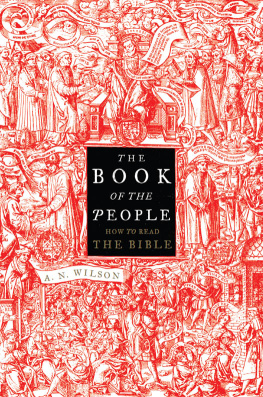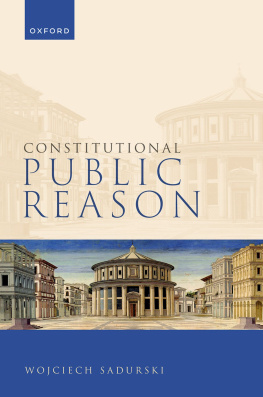The Triumph of the
Gun-Rights Argument
Why the Gun Control Debate Is Over
Harry L. Wilson

Copyright 2015 by Harry L. Wilson
All rights reserved. No part of this publication may be reproduced, stored in a retrieval system, or transmitted, in any form or by any means, electronic, mechanical, photocopying, recording, or otherwise, except for the inclusion of brief quotations in a review, without prior permission in writing from the publisher.
Library of Congress Cataloging-in-Publication Data
Wilson, Harry L., 1957 author.
The triumph of the gun-rights argument : why the gun control debate is over / Harry L. Wilson.
pages cm
Includes bibliographical references and index.
ISBN 9781440830358 (cloth : alk. paper) ISBN 9781440830365 (ebook) 1. Gun controlUnited States. 2. Firearms ownershipUnited States. 3. Pressure groupsUnited States. 4. LobbyingUnited States. 5. United States. Constitution. 2nd Amendment 6. FirearmsLaw and legislationUnited States. I. Title.
HV7436.W5552015
323.43dc23 2014028986
ISBN: 9781440830358
EISBN: 9781440830365
19 18 17 16 151 2 3 4 5
This book is also available on the World Wide Web as an eBook.
Visit www.abc-clio.com for details.
Praeger
An Imprint of ABC-CLIO, LLC
ABC-CLIO, LLC
130 Cremona Drive, P.O. Box 1911
Santa Barbara, California 93116-1911
This book is printed on acid-free paper 
Manufactured in the United States of America
Contents
Preface
When approached about writing another book on gun control, I was more than excited. The issue seemed to be off the radar for most people, and I was thrilled that someone was still interested in the topic. Perhaps never too far from the front burner, there had been little national discussion about guns in quite some time. The debate among the attentive public, interest groups, and some elected officials had neither abated nor become less intense, but most citizens were focused on other issues.
My interest had been piqued even further by two narrowly decided U.S. Supreme Court cases that had recognized an individual right to possess firearms, but had also made it clear that many types of gun regulations were permissible. Public opinion and public policy had been swinging in the gun-rights direction as well. Fears about what President Obama would do seemed largely unfoundedhe was focused on other issues and appeared to be unwilling to fight a losing battle.
My personal interest in the field had grown as well. I was planning an elk hunting trip to Wyoming. I had recently joined a local gun club and gotten involved with target shooting. My collecting interest had shifted from true antique firearms to the realm of milsurpsmilitary firearms ranging in age from 50 years to over 100 years old. I was amazed at how accurate some of them were and intrigued by the challenge of making some others more accurate. It is also interesting to see how the technology evolved over the course of many decades. A friend had convinced me that I should reload my own cartridges for both the elk hunt and for the milsurp rifles to find a load that my guns like.
After more years of frustration than I care to count, I was in the right place at the right time and was successful on the elk hunt. It is difficult to describe the range of emotions that I experienced, but they included both elation with the success and respect for the animal whose life I had taken. Some readers may empathize with that, and others may simply see it as barbaric. All are free to draw their own conclusions.
While virtually all of my personal experiences with guns have been positive, I have known people who have used a firearm to take their own lives, and I knew a person who had been accidentally shot. A former colleague and friend created a Facebook page titled What Is Your Number? following the fatal shooting of a close friend. He asked for students, friends, and colleagues to post the number of people they knew who had been a victim of gun violence. He was surprised by the high percentage of his students who knew a person who had been shot.
To understand all of these experiences is to begin to understand the complexities and the layers of how people use and how they view firearms. For all of us, our personal experiences help to shape our perspectives on various issuesthat is unavoidable. However, we all need to go beyond those personal experiences and the anecdotes that abound on all sides of the issue of gun control. We need to look at policies as well as proposed regulations and measure and estimate, as objectively and accurately as we can, their actual impacts and likely consequences, intended and unintended. The role of interest groups is to present their point of view; the role of informed citizens is to critically examine those views and make their own decisions.
No policy is perfect. No policy results in only positive outcomes, and no policy is totally ineffective. To argue that restricting firearms would not save any individual lives is absurd. It is equally ludicrous to suggest that those restrictions would not prevent some people from saving their own lives by using a gun in self-defense and impact the recreational uses of guns as well. The questions are which of those sides carries more weight, and how do we balance any restrictions against constitutionally protected rights and what most would see as legitimate uses of firearms. Many of us will have very different answers to those questions, and we will even disagree over how we can save lives. Those answers are elusive.
Those truths will not be found in this book, or any other, from my perspective. I hope the reader will find logical, reasoned arguments. Most, if not all, will disagree with some or many of those arguments. There are counterarguments for many of the ideas contained herein. If you at least question some of your preconceived notions regarding guns and gun control, then I will have accomplished my goal, and your time will not have been wasted. Those may be very modest goals, but I think they are logical and reasoned.
Acknowledgments
Roanoke College has shown confidence in me in many ways over many years and enabled me to do my best. President Mike Maxey and Dean Richard Smith have encouraged and supported various endeavors, including expanding the Institute for Policy and Opinion Research (IPOR) and, most important, recognized my strengths in spite of my weaknesses.
A research grant from the college allowed Judi Pinckney to proofread this book several times and to put it in a format that someone other than I can understand. Without her help, meeting deadlines would have been impossible. She is great at reading for typos and reading to see if it makes sense. Even more, she does all of this quite cheerfully.
The staff at IPOR picked up the slack when I was writing. Special thanks to Dave Taylor and Amelia Glaser for holding down the fort. Directing IPOR is the best job Ive ever had.
Gregg Carter recommended me to Praeger for this book. Later, he reviewed the manuscript and suggested specific ways to improve it. His insights made it better, and they helped me clarify some points that needed clarification. He not only made suggestions, but he also told me where to find sources to make those points. He encourages and guides. He is a colleague in the best sense of the word.
My editors at PraegerBeth Ptalis and Jessica Gribblewere supportive and helped keep me on task and on deadline. Rowman & Littlefield Publishers was very gracious in allowing me to use numerous excerpts from


















